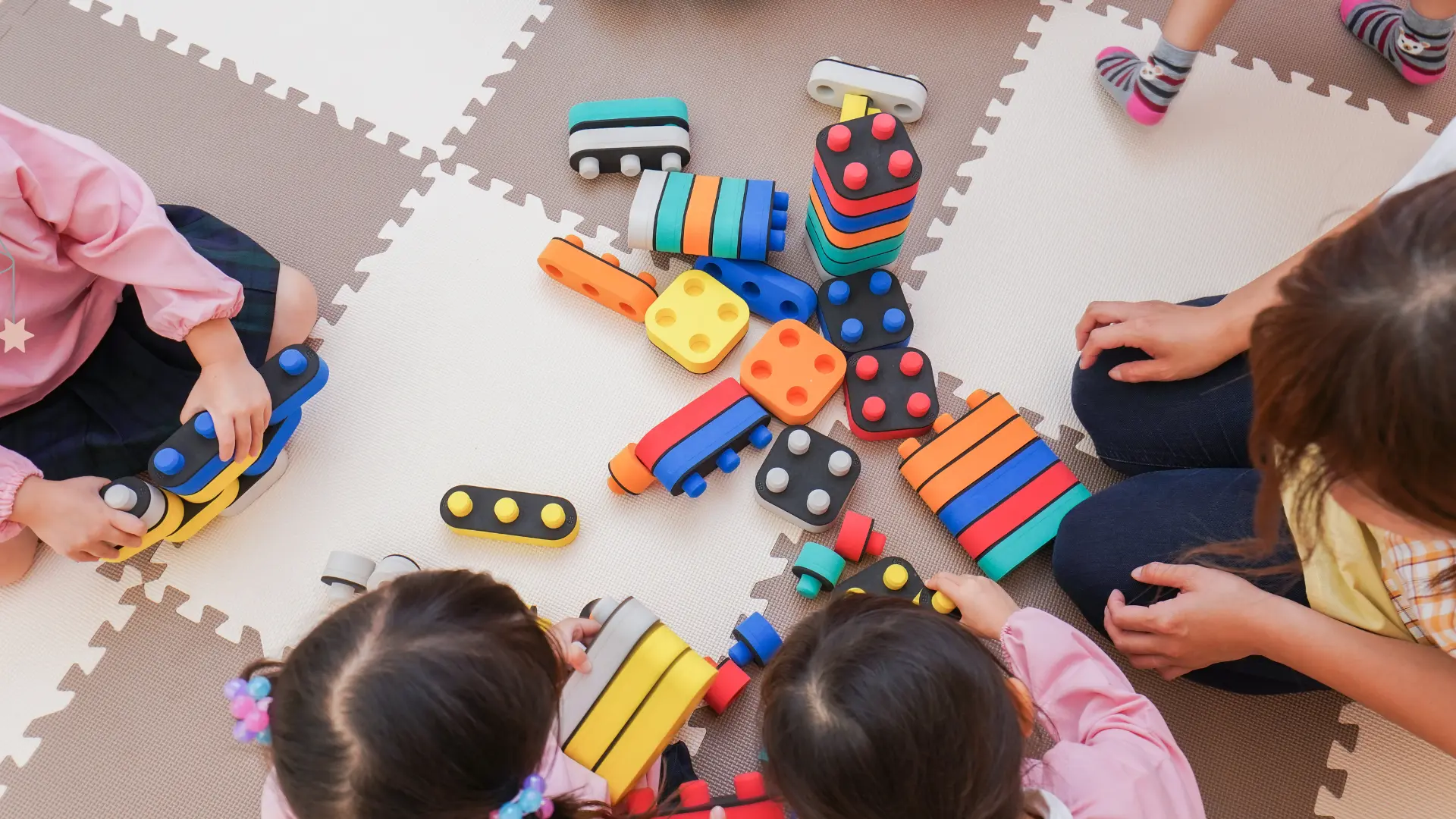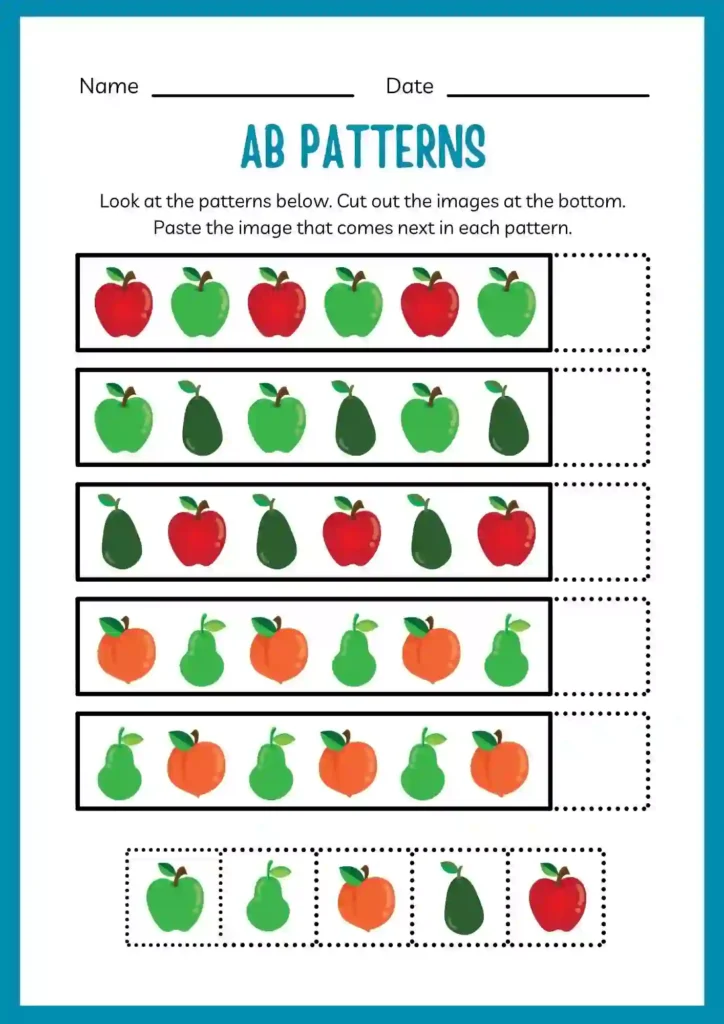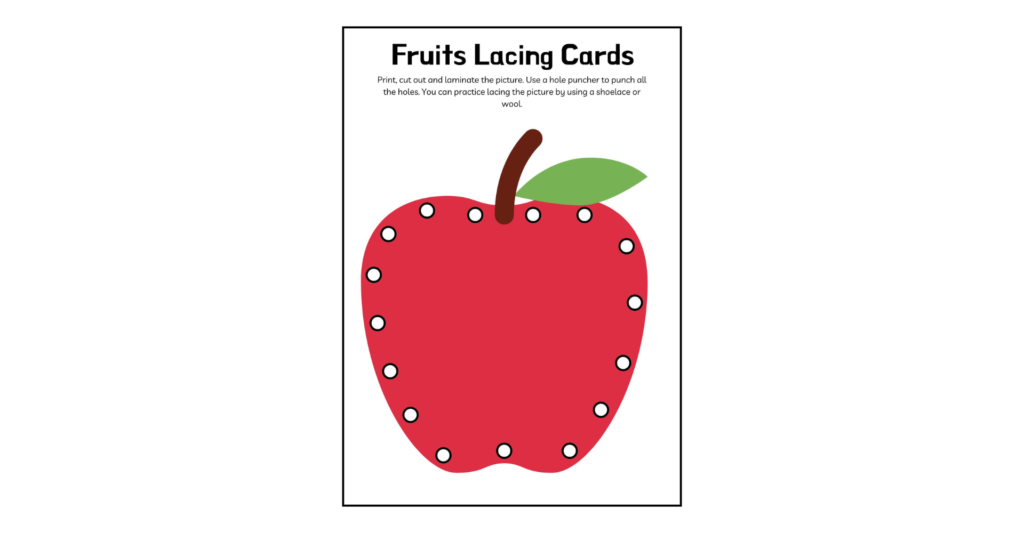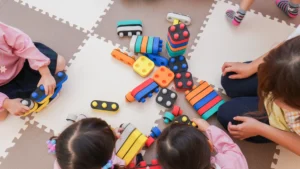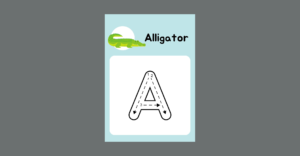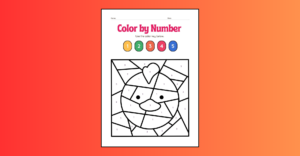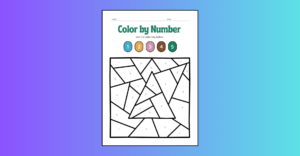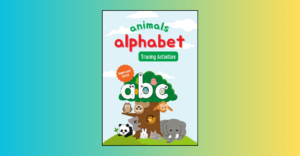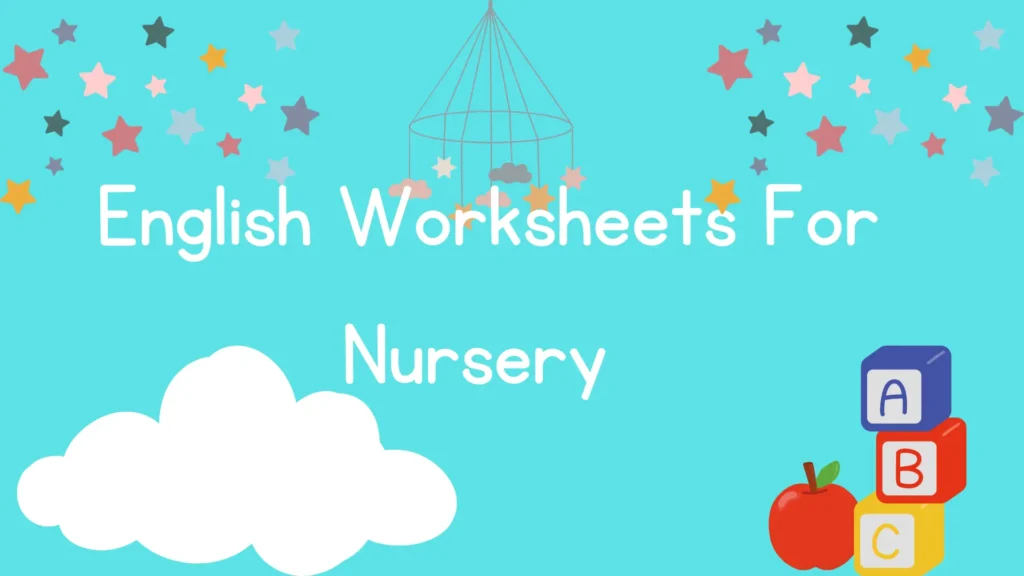
Early childhood education is more important than ever. One of the most effective tools for teaching young children is worksheets. They provide a structured way to introduce foundational concepts in English. In this Worksheets For Nursery English, we’ll explore the benefits of using nursery English worksheets, the various types available how to download them, and how to incorporate them into your child’s learning routine.

Types of Nursery English Worksheets
Alphabet Recognition
Introduce the alphabet with fun, colorful worksheets that focus on each letter. Activities may include tracing letters, matching uppercase and lowercase, and identifying objects that start with each letter. Get Started with our Alphabet worksheets perfect for your nursery child. This Alphabet Worksheet comes with simple dotted tracing lines which makes it easy to write alphabet letters.
It is also wise to introduce the idea of the alphabet first by showing them what they really are rather than starting tracing them first. For this, you can use alphabet posters which you print out and hang on walls or just stick them on something in order. This Poster is bright in color which will catches kids’ attention easily while also playing.
Phonics
Phonics worksheets help children understand the relationship between letters and sounds, which is a crucial step in learning to read. Look for activities that involve identifying beginning sounds, recognizing ending sounds, and forming simple words. For example, worksheets might have children match pictures to the corresponding initial letter sounds or sort words based on their ending sounds. These exercises boost phonemic awareness, enabling children to decode words more effectively. Understanding phonics also aids in spelling and writing, as children learn how sounds correspond to letters and letter combinations. Consistent practice with phonics worksheets lays a solid foundation for fluent reading and accurate pronunciation.
Vocabulary Building
Expanding vocabulary is key at this stage of development. Worksheets that focus on common themes, such as animals, fruits, colors, and everyday objects, help children learn and remember new words. Activities like matching words to pictures or completing fill-in-the-blank exercises can be particularly effective in reinforcing new vocabulary. These worksheets often include repetition and context clues, which aid in retention and understanding. A rich vocabulary is essential for reading comprehension, effective communication, and overall language development. Encouraging children to use new words in sentences and everyday conversation further strengthens their vocabulary skills.
Simple Sentences
Once children are comfortable with individual words, introduce worksheets that involve constructing simple sentences. These activities help children understand basic sentence structure, such as the order of words and the use of capital letters and punctuation. Worksheets might include exercises where children match words to form sentences, fill in missing words, or unscramble jumbled sentences. Constructing simple sentences improves reading skills by teaching children how words come together to convey meaning. It also enhances writing skills, as they learn to express their thoughts clearly and coherently. Mastery of simple sentences is a crucial step towards more complex reading and writing tasks.
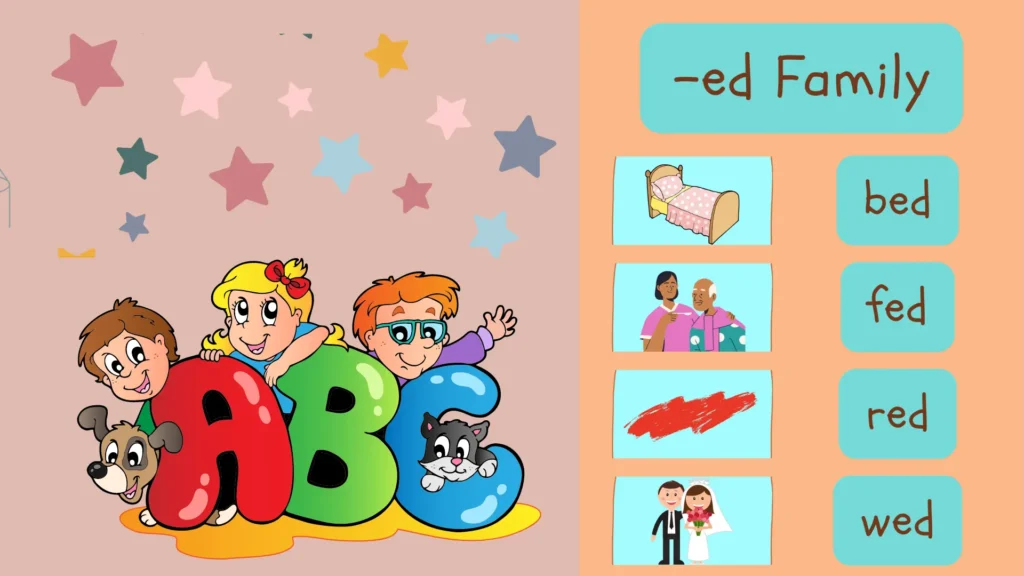
Benefits of Worksheets For Nursery English
Cognitive Development
Worksheets play a crucial role in cognitive development by encouraging problem-solving and critical thinking. When children engage with worksheets, they are often required to identify patterns, sort objects, and match similar items. These activities stimulate their brains, helping to build essential cognitive skills. As children complete different tasks, they develop skills like sorting, matching, and pattern recognition, which are fundamental for more complex learning later on. Additionally, these exercises promote concentration and attention to detail, as children must focus on completing each task correctly. Over time, regular practice with worksheets can lead to improved memory and the ability to process information more efficiently.
Language Skills
Using worksheets helps children enhance their vocabulary, understand sentence structure, and improve reading comprehension. By engaging in activities such as identifying letters and matching words to pictures, children are exposed to new words and concepts in a structured format. This repeated exposure is crucial for language acquisition and retention. Furthermore, worksheets often include exercises that involve reading simple sentences and answering questions about them, which aids in developing comprehension skills. As children progress, they begin to understand the relationship between words and their meanings, which is a key component of language proficiency. These foundational skills are essential for effective communication and literacy development.
Fine Motor Skills
Worksheets often involve activities like tracing and coloring, which are excellent for developing fine motor skills. These activities require children to use small muscle movements in their hands and fingers, which are essential for writing and other tasks that involve precision. Tracing letters and shapes helps children learn the correct way to form letters, which is critical for handwriting. Coloring within the lines encourages control and coordination, as children must carefully move their hands to avoid going outside the boundaries. These activities strengthen hand-eye coordination and improve dexterity, essential for writing. Over time, consistent practice with these tasks can lead to greater hand strength and improved manual control, which are beneficial for many daily activities beyond writing.
You can also try our lacing fruits cards worksheets along with tracing sheets to increase their fine motor skills.
How to Use Worksheets Effectively
Tips for Parents and Teachers
- Set Clear Goals: Identify what you want your child to achieve with each worksheet. For example, you might focus on recognizing five new words, understanding basic sentence structure, or being able to identify and match different shapes and colors. Clear goals provide direction and help measure progress, making each learning session more purposeful and effective.
- Interactive Learning: Combine worksheets with hands-on activities to enhance engagement and understanding. Reading aloud to your child can help reinforce the concepts presented in the worksheets. Additionally, using flashcards, educational games, or even physical objects related to the worksheet content can make learning more dynamic and interactive. This approach caters to different learning styles and keeps the experience enjoyable.
- Positive Reinforcement: Praise your child’s efforts to build confidence and encourage continued learning. Positive reinforcement, such as verbal praise, stickers, or small rewards, can motivate children to complete their tasks and try their best. Highlighting their successes, no matter how small, fosters a positive learning environment and helps instill a love for learning. Encouragement and support can make a significant difference in their overall development and attitude towards education.

Frequency and Duration
Incorporate worksheets into daily learning but keep sessions short (15-20 minutes) to maintain interest. Regular, consistent practice is more beneficial than lengthy sessions.
Sample Worksheet Activities
Here are a few engaging activities that can be incorporated into your routine:
- Color By Number: Kids have to color the objects according to the numbers assigned to colors. These activity worksheets help kids recognize numbers and remember which colors have which number that way they learn to train their brains.
- Tracing and Coloring: Trace letters and then color objects that begin with that letter. This worksheet encourages kids to trace out letters or shapes and color the object which they have made by tracing.
- Dot-to-Dot Connecting Worksheets: Kids have to connect the dots in sequence with a pencil or crayon to uncover animals and then add colour of their own favourite.
Printable Nursery Worksheets
Having access to printable worksheets is a great resource for parents and educators. They offer convenience and variety, making it easy to reinforce learning at home or in the classroom. Our website offers various different types of worksheets don’t forget to check out.
Creating a Learning Routine
Suggested Daily Schedule
- Morning: Start with 10 minutes of alphabet practice.
- Afternoon: Engage in 15 minutes of phonics games.
- Evening: Spend 10-15 minutes on vocabulary-building worksheets.
Balancing learning with play is crucial. Integrate educational games, storytelling, and outdoor play to create a well-rounded routine.
Additional Resources
In addition to worksheets, consider incorporating these resources:
- Books: Select books that complement the worksheets. Picture books with simple text can help the vocabulary and concepts children are learning. We can look for books that focus on the same themes as the worksheets, such as animals, colors, or everyday objects. Reading together not only builds language skills but also creates a love for reading and learning. Regular story time can really benefit and provide a context for new vocabulary.
- Apps: Educational apps are also a great way for phonics and vocabulary. Many apps are designed to be interactive and engaging, making learning fun. Look for apps that offer a variety of activities, such as letter tracing, sound recognition, and word matching. These digital tools can provide additional practice and instant feedback, helping children to solidify their understanding of key concepts. Using apps can also introduce children to technology in an educational context, preparing them for future learning.
- ABCmouse: ABCmouse offers a comprehensive early learning program that includes activities for reading, math, art, and music. The app features interactive lessons on phonics and vocabulary, with games and puzzles that keep children engaged.
- Starfall ABCs: Starfall ABCs is designed to teach children the alphabet and basic phonics. The app uses songs, animations, and interactive activities to help children learn letter sounds and word recognition.
- Reading Eggs: Reading Eggs makes learning to read fun through interactive games, guided reading, and e-books. The app covers phonics, sight words, spelling, and more, providing a comprehensive reading experience.
- Games: Simple games that involve letter recognition and vocabulary can make learning more interactive and enjoyable. Consider games like letter bingo, memory matching games, letter scavenger hunts or word puzzles. These activities can be done with physical game sets or online versions. Playing games encourages social interaction and cooperative learning when played with others. Games can be a fun way to practice language skills in a low-pressure setting, promoting both learning and play.
Worksheets for nursery English offer a structured, enjoyable way to develop essential language skills. By integrating these activities into your child’s routine, you lay the groundwork for a successful educational journey. Explore our extensive collection of worksheets and resources to support your child’s learning adventure!
What age group are nursery English worksheets suitable for?
Nursery English worksheets are typically designed for children aged 3 to 5 years old. These worksheets introduce basic concepts in a fun and engaging way that is appropriate for preschoolers and early learners.
What are the benefits of using worksheets for nursery English?
Worksheets help develop cognitive skills, language skills, and fine motor skills. They provide structured learning, reinforce new concepts, and offer opportunities for practice. Worksheets also help children develop concentration and attention to detail.
What types of worksheets are most effective for learning phonics?
Worksheets that focus on beginning sounds, ending sounds, and simple word formation are most effective for learning phonics. Look for activities that involve matching letters to sounds, identifying phonemes, and constructing words.
How can I track my child’s progress with worksheets?
You can track your child’s progress by setting specific goals and noting their achievements. Keep a record of completed worksheets and observe improvements in their skills. Regularly reviewing past worksheets can also help identify areas that need more practice.
What should I do if my child finds worksheets challenging?
If your child finds worksheets challenging, try breaking down the activities into smaller, more manageable steps. Provide additional support and encouragement, and consider using interactive resources like apps and games to reinforce the same concepts in a different format.
